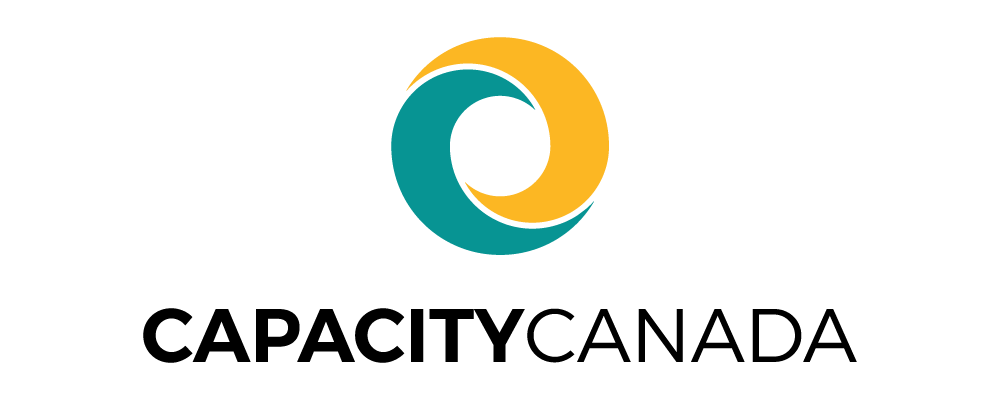|
Getting your Trinity Audio player ready...
|
Vivian Zochowski has been to more than a half dozen governance bootcamps set up by Capacity Canada, and every time she sees something new.
This time, it’s a heightened energy and learnings that bode well for 40 organizations with people in the room.
“Networking is one of the biggest takeaways from this gathering,” says the retired executive from Sun Life, who is a trustee with the Lyle S. Hallman Foundation in Kitchener-Waterloo. “The impact of meeting others on the same journey is truly invaluable.”
Energy is strong through the latest Manulife Board Governance BootCamp, held last week in Cambridge, as participants work on common challenges and solutions.
What’s brought more than 100 people to this BootCamp, the 11th and largest hosted by Capacity Canada, is their common pursuit of social good and innovation.
A survey before the event identified five top challenges:
• Fundraising in a changing environment
• Strategy and decision making
• Board recruitment, engagement and succession planning
• Changing government priorities, and
• Organizational capacity and succession planning for CEOs/Executive Directors
Through two days of sessions, talk focuses on a full range of challenges, what could come next and what to do in each organization. Interaction of more than 100 participants allows them to hear what others do and exactly how they do it.
Joanne McKiernan, acting Executive Director of Volunteer Toronto, describes the BootCamp as vital.
A former government employee, she now works with a large number of volunteers and a board of directors, common to many groups in the room.
“It’s a real benefit of this environment, to see what others are doing. I need to be armed with context about the environment, my sector and the nature of governance.”
Volunteering is unique and changing in Canada, she says, where about half of Canadians volunteer and more than two million people work in the charitable sector.
“As our society changes, volunteering is about social good for many, and for some it’s also a key part of how they’ll flourish in society. It can be a way to get experience, build networks and develop.”
Engaging youth to volunteer is crucial, she says, citing programs that require students to volunteer for 40 hours. Looking ahead, more might be done to help keep them and others as active volunteers.
On opening night, Senator Ratna Omidvar describes how Canada’s charities are largely invisible, despite their massive contribution to the economy.
There’s need for a national volunteerism strategy and changes to regulations that restrict how charities and non-profits can raise money and continue to grow, said Sen. Omidvar, co-author of a Senate Special Committee Report on the charitable sector, the first of its kind in Ottawa.
Their Catalyst for Change study marks an important step to strengthen groups that serve millions of Canadians.
As found in the report, the charitable sector faces a rising tide of challenges, participants were told by Don McCreesh, past chair of Imagine Canada and current executive committee member of the Institute of Corporate Directors.
He describes his own four-hour session “like drinking water from a firehose”, since he covers a broad range of current challenges for boards and organizations, large and small.
A common theme is that larger corporations face challenges that will trickle down and affect other groups, including Canada’s 170,000 charities and non-profits.
The charitable sector is not immune from rising risk and reputational threats that face almost every organization, whether it’s a small non-profit or major international corporation, he says.
Rising competition for funding, donations and support for various causes present unique challenges. But also rising donor expectations and risks that face all organizations make it vital that non-profits and charities are well-informed.
Hugh Munro and Liz Dennis, two Capacity Canada designers-in-residence, discuss trends and challenges facing every industry – disruption facing larger corporations and how similar issues arise in the charitable sector.
They introduce a wave diagram to explain why other groups have foundered, from Kodak and Nortel to others in today’s headlines, and then ask participants to look at their own challenges that could sidetrack their work.
Openly discussing challenges and good board governance are important to every group, agrees Susan Dietrich, board chair from St. Peter’s Lutheran Church in Kitchener, at the BootCamp for the first time.
“For us, being here is a bit like a square peg fitting into a round hole because our board must come from within our own congregation, so we can’t draw from the community. But there are a lot of synergies that we can take back to our group.”
Expertise of faculty and resources from the BootCamp “are phenomenal”, adds Rev. Mark Ehlebracht from St. Peter’s.
“The other piece for us is the dialogue. Reflection and growth always happens through dialogue and some of the ideas we’re hearing, challenges and solutions they’re putting out there, are really valuable.”
Participants leave the BootCamp with ideas and plans for their own organizations, but also benefit from a check-up session next March to report on progress, feedback and possible areas to move forward.
Each year brings new information and discussions. In breakout sessions on both days, participants identify numerous learnings to take back to their organizations.
“In the past, we’ve talked about things like ‘generative thinking’,” explains Vivian.
“It’s a term that’s hard for many to understand. This is the first time that suddenly I see not only what it means, but how to do it. To me, the biggest change at this session is that we can see what to do, how to think and act on it.”
Another key upside is that, with more participants, many more are engaged and see the BootCamp can propel their charities and non-profits along an ongoing journey of good governance and growth.
If you ask people what they remember from a presentation, it might be five or six highlights, she says.
“But what you really take away is the power of the group, the passion and heightened interest in what you’re doing. That doesn’t go away.”
“Trying to get not-for-profits in a better space can make the whole sector a better performing entity, better with the public, better at dealing with government officials who want to see what you’re doing, since governance is a growing part of their focus.”
It also is a chance to see things in different ways than they might be exposed to at their own meetings.
“When you come to something like this, it ignites something else that can bring a heightened passion to your work.”

